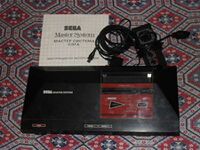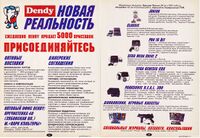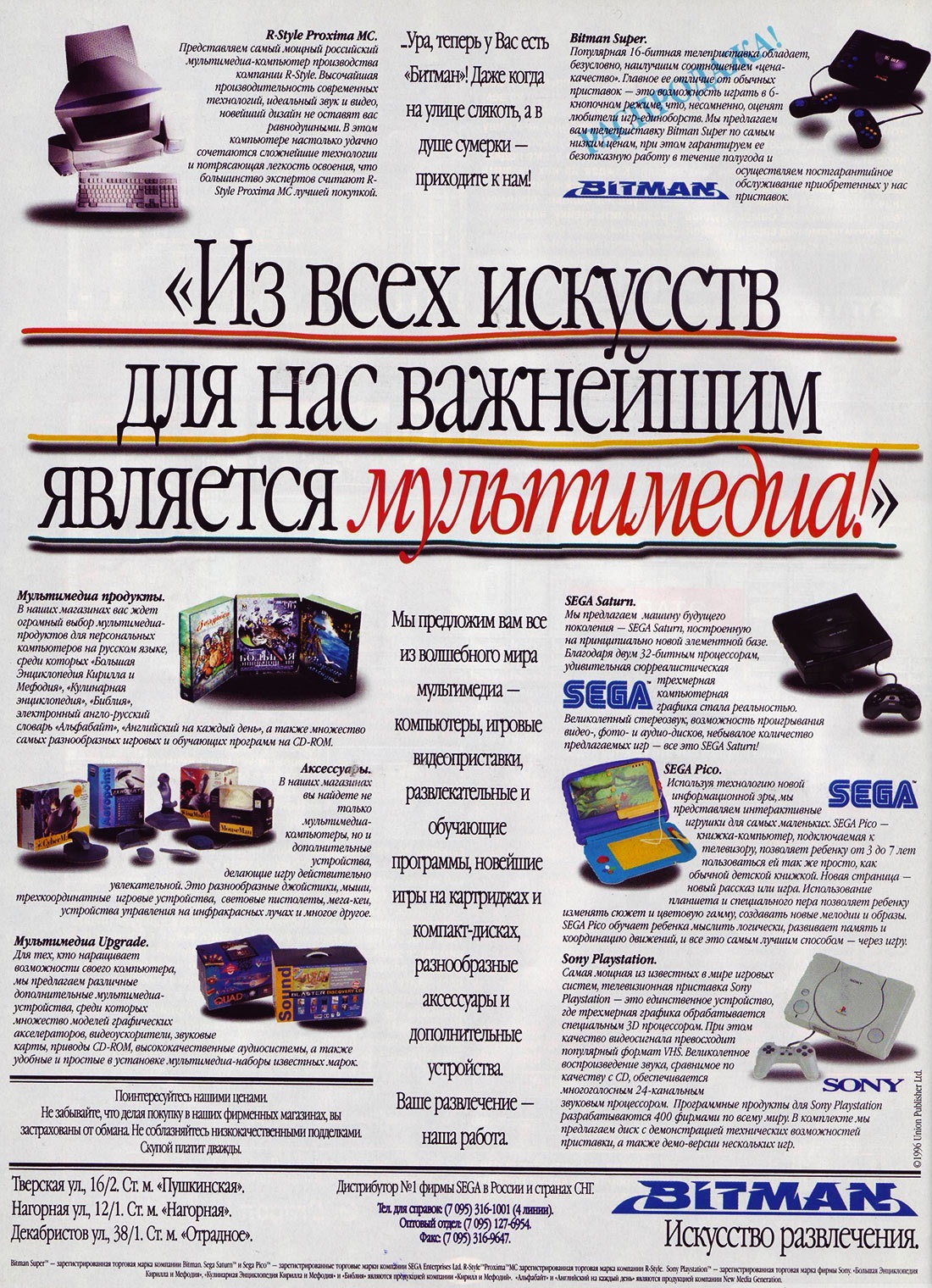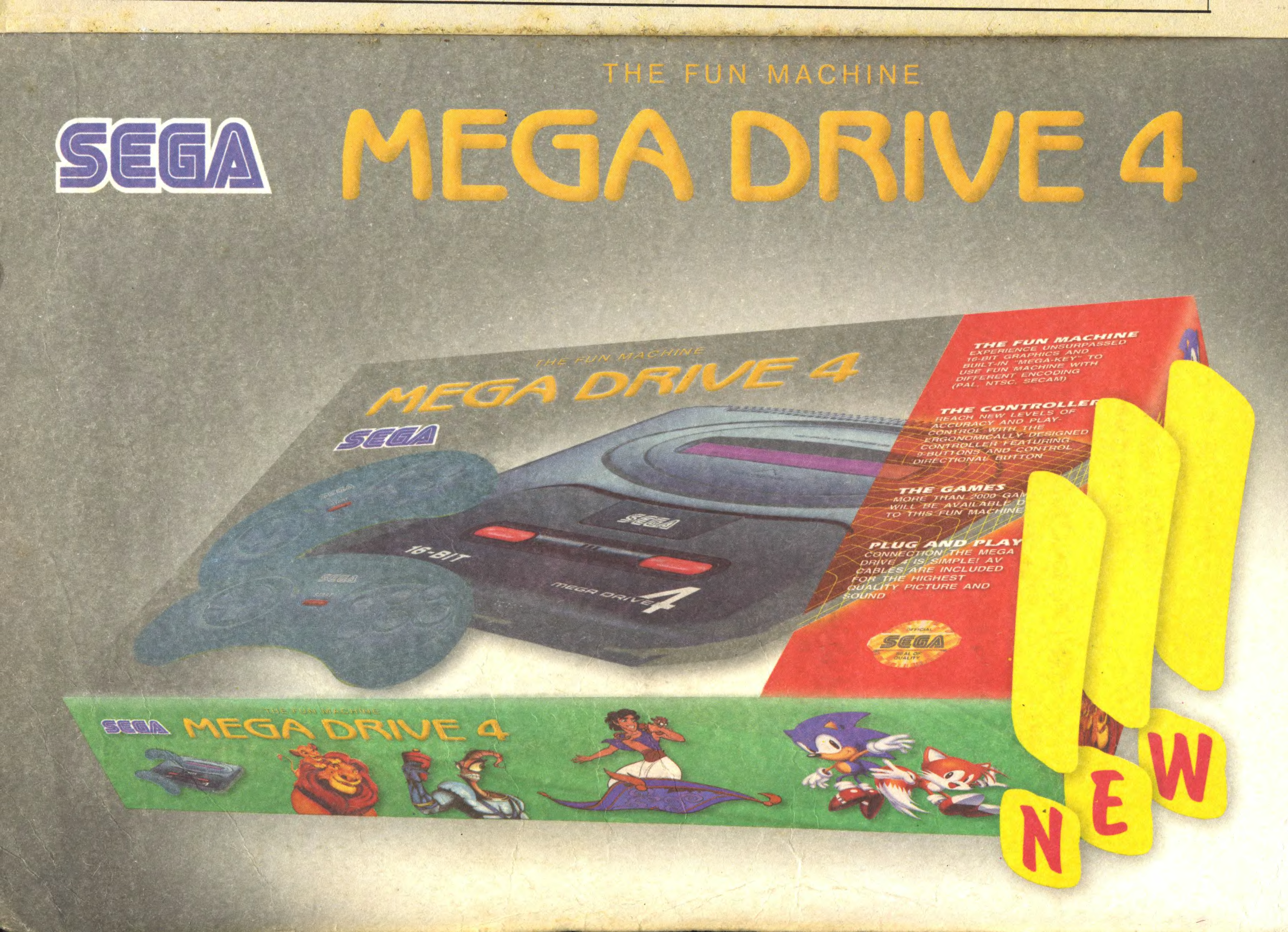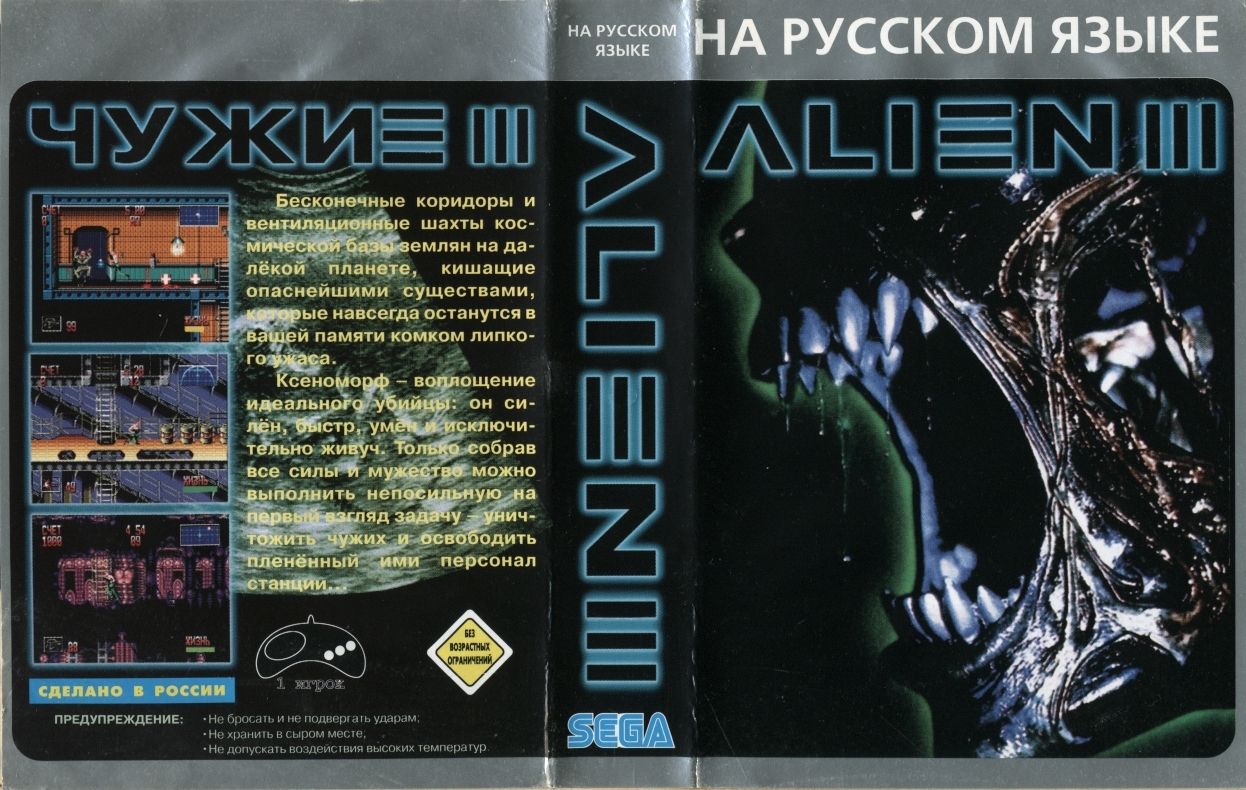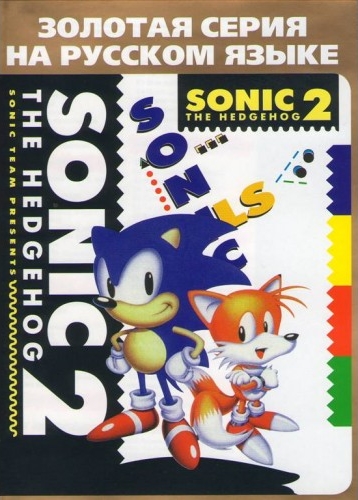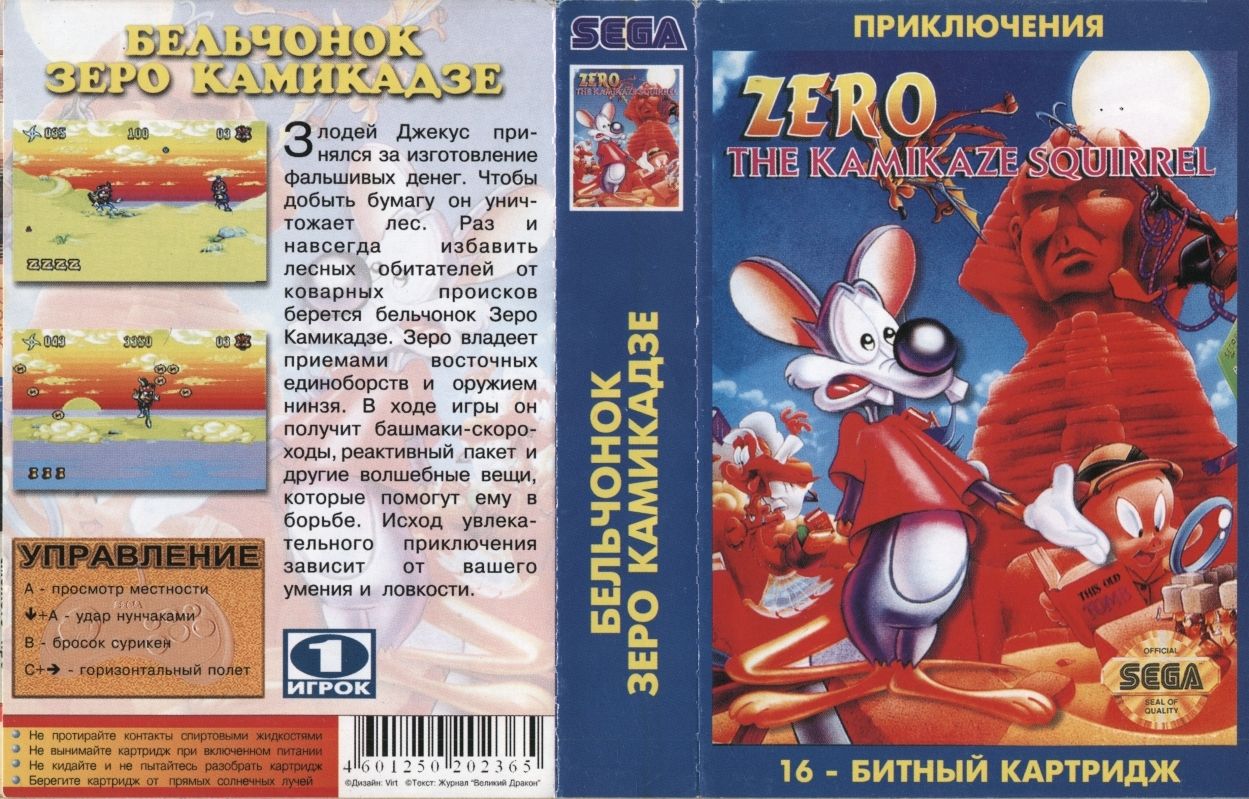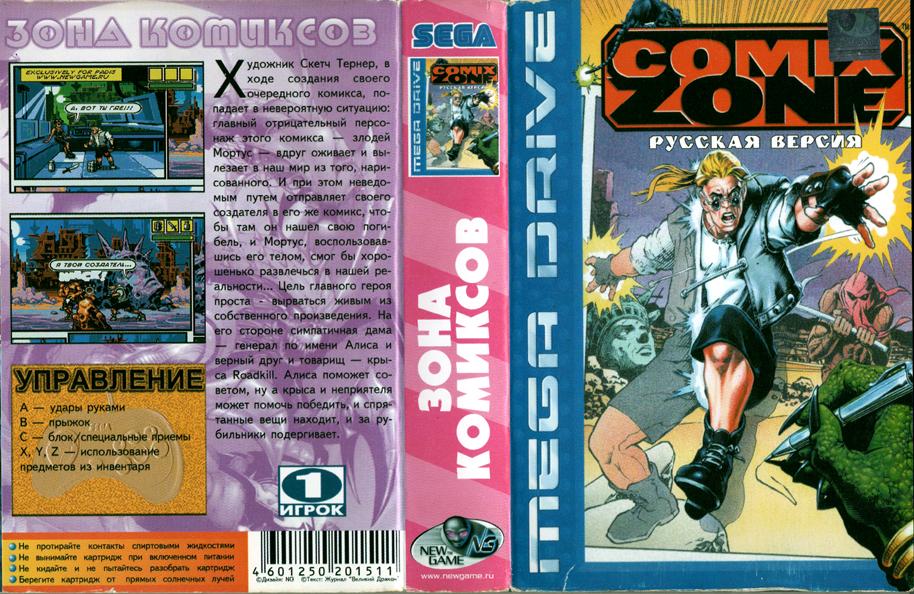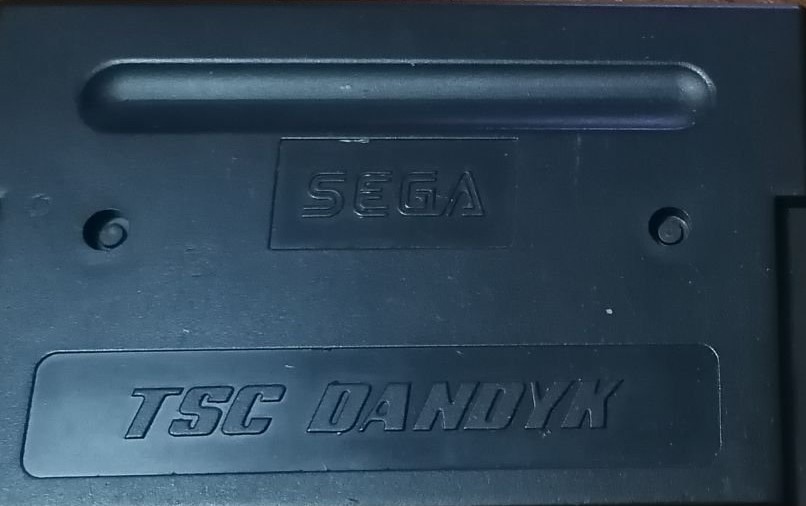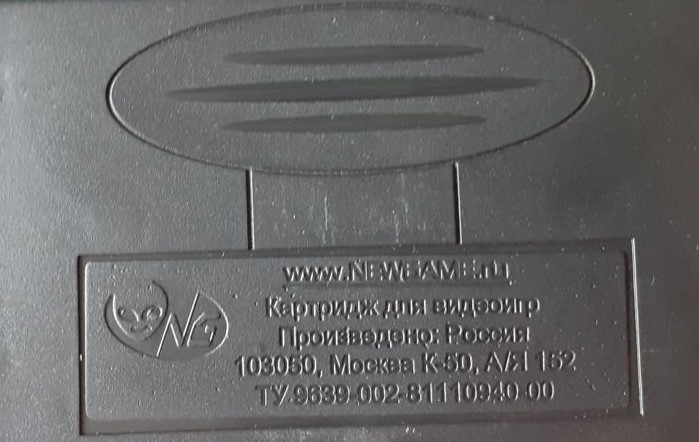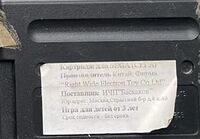History of Sega in Russia
From Sega Retro
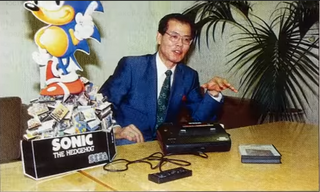
|
| History of Sega in Russia |
|---|
| Official Sega distributor(s): Forrus (1993-1995), Buka (1994-1999), Bitman (1996-1997), R-Style (1997-1999), NVT (2000-2002), 1C-SoftClub (2005-present) |
The modern state of Russia (known officially as the Russian Federation), emerged as an independent state in December 1991, following the demise of the Soviet Union (USSR). The move from a one-party communist state to a more Western-style capitalist society, meant that luxary items such as video games were able to become more widespread. Sega has been involved in the region in various guises since at least 1990.
Contents
- 1 Sega Master System
- 2 Dendy
- 3 Forrus
- 4 Competition
- 5 Buka
- 6 Bitman and R-Style
- 7 PC Games
- 8 Game crisis in Russia
- 9 Mezhregional'naya obshchestvennaya organizatsiya sodeystviya proizvodstvu i realizatsii videoigr
- 10 New Game
- 11 BBG Electronics
- 12 Sega Dreamcast
- 13 Mega Drive clones in early 2000s
- 14 Videogames Co. Ltd
- 15 Game Systems
- 16 1C-SoftClub
- 17 Constanta Plus
- 18 Sega Amusement
- 19 Cyber Toy
- 20 DVTech
- 21 Segagames.ru
- 22 Kartridzh Tsentr
- 23 Srednesrochnyye finansovyye i real'nyye investitsii
- 24 Mega Drive cartridges in 2010s
- 25 Mega Drive clones today
- 26 Homebrew Games
- 27 Sititek
- 28 References
Sega Master System
Residents of the USSR had contact with Sega for the first time in the Yuri Antonov song called Ot pechali do radosti from 1987 which contained clips from the Hang-On Jr.
Video games had existed in Russia during the days of the Soviet Union (Tetris being the most well-known example of a Russian video game export). Consoles were also present in the Soviet Union, and one of the first was Palestra-02, produced in Ukraine since 1978, but virtually no Western video game companies chose to sell their products inside the bloc.
After Gorbachev's reforms in the second half of the 1980s, the situation changed and more Western culture began pouring into the USSR. Sega had a go at selling the Sega Master System (model no. MK-3096-19) inside the Russian SFSR in 1990. The exclusive Russian Master System outputs a SECAM signal (for compatiblity with the Soviet TV standard), lacks both a card slot and reset button and have Alex Kidd in Miracle World built in much like redesigned Master System II console seen elsewhere. Little is known about the console's fortunes, though given its rarity, it is unlikely to have been a success.
Dendy
Russia's video game market is widely considered to have been created when Russian importing company, Steepler, created the "Dendy", an own-branded Nintendo Famicom sourced from Taiwanese manufacturers. At the time, no legislation existed in Russia to protect video game copyrights - while cloning games and hardware was both illegal in much of the world, the Dendy and its derivatives were perfectly legal in Russia - Nintendo could not stop the console's distribution, and didn't.
With a fully fledged marketing campaign, Steepler was able to dominate its home market, but the economical situation in Russia meant that Dendy was out of reach of most consumers, costing several months' worth of the average worker's salary (and indeed in 1993 it was estimated that 39-49% of the population was classed as being in poverty). Steepler were able to bring the costs down as the years went on however, bringing the console into a more affordable price range around 1994.[1]
Forrus
In 1993 Nissho Iwai (a Japanese firm which had operated in Russia for decades) got the rights to sell Sega consoles in Russia. The company decided to look for a distributor who want to sell consoles in the country. Negotiations have started with Steepler who, seeing the success of Sega Mega Drive in Europe, also wanted to repeat it in Russia. Nissho Iwai was ready to start cooperation but the company wanted from Steepler to break all contracts with Taiwanese companies that produced Dendy. Steepler did not want to do this and the negotiations ended.
Nissho Iwai created the Forrus who became the exclusive distributor of Sega in Russia. Sega would sell stock to Nissho Iwai, who would sell it to Forrus, who would distribute to retailers across the country. In November 1993, Sega Master System I and II were released all in European PAL. On November 14, Sonic - Super Hedgehog program was created which was weekly television show promoting Sega products. Mega Drive II was released in April 1994 in European PAL version.
In August 1994, Kunimasa Yagi arrived at the headquarters of Nissho Iwai to present Sega's plans for Russia. He announced that Sega plans to sell 1 million consoles in 3 years and intends to have a 90% share in the Russian video games market. Kunimasa Yagi also said that promotion consoles are limited due to numerous counterfeits on the market. As he said, most of the clones can be distinguished by the fact that they are in a white box in contrast to the original in black, and by the lack of Sega marking on some elements of the set.[2]
Expression error: Unexpected < operator. File:Migr 1 RU.pdfFile:Migr 1 RU.pdfFile:Migr 1 RU.pdf
Competition
Not content with just marketing Dendy consoles, Steepler used its position of market leader to market its Mega Drive clone, the Pro 16 Bit and High Quality. Its distribution channels and associated Dendy brand helped drive sales across the nation - at this point the Dendy was synonymous with video games in general, leading to curious situations were consoles would be referred to as "Nintendo Dendys" or "Sega Dendys". Steepler also distributed its products around former republics of the USSR giving it a territorial advantage over Forrus which in 1994 had only 25 sellers and only in Moscow.
Steepler and Dendy sold games from USA, Asia and pirate versions. Consoles sold by them are Mega Drive 2 in green box which had two versions: original and clone, Mega Drive 2 from Southeast Asia, Mega Drive 2 from Asia in self made box and Sega Genesis CDX from USA. Only in June 1994, Steepler sold 4,000 Mega Drives but planned to increase sales in the autumn from 10,000 to 15,000 per month.
Steepler decided to go further and registered the Mega Drive trademark on October 06, 1994.[3] This meant that according to Russian law, they had the right to sell Mega Drive despite Sega's disagreement. The trademark case would be repeated in Sega's history in this country it will be present even today.
Its Sega operations were cut short in November 1994, when Steepler was chosen as representative of the Nintendo in all former USSR countries. In Russia and CIS countries, the newly created Dendy company was selected as an exclusive distributor. While the agreement permitted the unlicensed Dendy consoles to be sold, sales of rival products (such as Sega) was restricted. Sega products were sold by Dendy with restrictions but Steepler could sell Sega consoles normally.[4]SNES delivery started on November 15 and a large advertising campaign was launched, 10,000 consoles were sold by the end of the year. As a result, in December 1994, there was only one Mega Drive for every three Super Nintendo consoles sold.[5] Unfortunately, only a small part of the games reached the distributor, so customers only bought consoles without games. In January, the promised rest of the games arrived. Nintendo delayed the next delivery of consoles by up to two months. Because of this, Dendy didn't have any goods to sell, so it was decided to negotiate a new contract with Nintendo and permission to sell Sega consoles was given.[6] The high cost of importing original SNES consoles and cartridges from Germany affected the Steepler, which was declared bankrupt in 1996.
Another major competitor to Forrus was Bitman, established in November 1994. In addition to marketing NES clones, the company launched its own Mega Drive, the Super Bitman, based on the infamous KW-501 clone console and Turbo Bitman.
Other competitors included Magic 2, Kenga and its Mega-Ken Mega Drive clone, and Subor with the SB-16C. The true number of smaller organisations selling imported software or accessories is not known.
Buka
Demand for Mega Drive consoles continued to grow, as did the number of clones available. During his stay in Russia, Yagi concluded that it is still impossible to fight counterfeits with legitimate methods and admitted that Sega would fight clones by high quality and low prices. Several strategies have been taken to combat this phenomenon. In Autumn 1994, Nissho Iwai selected Buka as the official Sega distributor.[7] From now on, Sega products were distributed by 2 distributors. The second step was getting along with Steepler and Dendy to sell the original Mega Drive. Now they sold original Sega, but they also had clones in the stores and still the original consoles were more expensive than this clones, so a Asian version of Mega Drive 2 was released. It was cheaper than the European one (this model was still on sale).
At the end of 1994, Mega CD II (sold there in Asian NTSC and European PAL) and Game Gear were delivered to Russia. In March 1995 the Mega Drive 32X was released and the sale of the first Sega Saturn models imported from Japan began.
Several games have a text description in Russian, such as Sonic 2, ExoSquad, and Primal Rage.
In 1995, 30% of the Sega consoles sold in Russia were clones. The consoles sold by Bitman and Kenmaster had each 10% of sells on the market.[8] Despite the large piracy, Sega recognized Mega Drive as a success in Russia.
In 1995, Sega got along with Kenga to distribute Sega Multi Mega.
also published in:
- Strana Igr (RU) #1 (1996-xx-xx)[11]
Bitman and R-Style
To act even more effectively against piracy Sega has chosen a second distributor. After one year of negotiations, in January 1996, an agreement was signed under which the Russian company Bitman became the distributor No.1 of Sega Europe in Russia and the CIS countries[12] With its own chain of stores, Bitman was able to distribute the Mega Drive 2, Sega Saturn, Sega Mega-CD 2, Sega Game Gear, Mega Drive 32X and Sega Pico in addition to the Super Bitman (which was called the official clone) all in the European PAL system. At a joint press conference on June 6th, 1996 this fact was officially confirmed and detailed plans for distribution were presented. Press releases stated that "The Bitman-Sega strategic alliance will lead Russia into the information future."[13] At the conference, it was announced that Sega products will be available for purchase with a one-year warranty and with a certificate of the Russian State Standard. Saturn has also been announced as the main gaming system, but the demand for the affordable Mega Drive II and Pico is also strong.[14] The prices of consoles were very close to the prices of clones, which undoubtedly had a positive impact on the competitiveness of products, especially since clones could be found in most cities. In 1996, CEO of Bitman said that 50% of consoles sold on the Russian market were from Sega, but 35% were either mostly Chinese fakes or official clones (Super Bitman).[15]
In 1996, the Russian version of Sega Pro was created. Unofficial importers released Sega Nomad and Mega Jet in the same year. Despite the end of Steepler, trademark was register by Steepler Investment in April 11, 1996.[16]
After the success of Mega Drive, Sega had high hopes for the distribution of Sega Saturn. The Russian and CIS markets have become a priority among former Eastern Bloc countries.[17]The European version of the console could already be bought from official distributors since January 1996, but full retail sales in other stores began in May 1996. Despite the efforts of Buka and Bitman, Sega Saturn just as in other countries of the world did not sell as good as Mega Drive. This was due to a small number of pirated software that helped Mega Drive and PlayStation gain popularity in the country.
In 1997, Bitman participated in a large-scale campaign to remove suppliers of illegal products from the Russian market. In December 1997, the company was acquired by R-Style, who inherited Sega's distribution agreement. R-Style continued selling the Saturn (MK-80200-50 and MK-80200A-50), Mega Drive II (European PAL), Mega CD II (European PAL) and Pico (European PAL) in the region until the end of the 1990s.
According to the Russian Great Dragon, there were several hundred thousand Mega Drive consoles in Russia in 1998. While this figure most likely includes the original Mega Drive and some known clones, it isn't probably a complete picture of the number of consoles in this country especially since many of the smaller clone brands weren't sold in an organized manner.
In the late 90s, some stores began importing quite exotic Mega Drive accessories and variants like Aiwa CSD-G1M.[18]
also published in:
- Strana Igr (RU) #6: "Sentyabr 1996" (1996-xx-xx)[19]
also published in:
- Strana Igr (RU) #25: "Iyun 1998" (1998-xx-xx)[20]
PC Games
The Russian PC market for many years was under strong piracy pressure. Compilations that contained many games on one disk appeared as the first but then came Russian pressed bootlegs that became very popular in the former USSR countries and in former Warsaw Pact countries such as Poland. This games had covers in Russian and at the beginning many people thought that this were original games because a lot of them looked very identical. Along with their popularity, the first translations of games into Russian appeared also illegal translations of Sega games such as Sega GT by 7th Wolf.
Game crisis in Russia
In 1998, the economic crisis began in Russia. Original games began to cost huge money. This resulted in a very high level of computer piracy (95%). Pirate titles were widely available, within a few days of their release, outside of every Moscow metro station. Many realized that official distribution has no future in Russia.
As a leading software publisher in Russia, the CIS and the Baltic States, Buka has seen this problem since it was founded in 1993 and used various methods to limit its impact. They decided to take a risky step, releasing two versions of games, a full box version with instructions (and a small surprise), as well as a cheaper version in the jewel case to compete with pirates in terms of price. The customer has chosen a legal product.
In 1999 Buka also began talks with Nintendo, Sega and Sony to apply a similar solution, but none of them agreed. Therefore, it was decided to stop cooperation with these companies. R-Style also decided to focus on selling computers. Although piracy still existed, the government and other companies tried to fight it.
Mezhregional'naya obshchestvennaya organizatsiya sodeystviya proizvodstvu i realizatsii videoigr
At the beginning of 1999, Simba's Video Games, known for releasing Famicom clones and official accessories for PlayStation, started selling a Mega Drive clone called Simba's 168. Later that year, Mezhregional'naya obshchestvennaya organizatsiya sodeystviya proizvodstvu i realizatsii videoigr (Interregional public organization for the promotion of the production and sale of video games) associated with BBK Electronics[21] bought the rights to the Mega Drive name and began selling consoles and accessories under the brand Mega Drive with Simba 's like Vzlomshchik Kodov, Mega Drive 2, Mega Drive 4 (clone console) and others.
In later years, they participated in a project of translating Sega games into Russian. Until 2004, about 200 games were translated.[22]
also published in:
- Entsiklopediya luchshikh igr Sega. Vypusk 1 (RU) #1: "" (1999-xx-xx)
- 730 igr dlya Sega (RU) #1: "" (1999-xx-xx)
also published in:
- Entsiklopediya luchshikh igr Sega. Vypusk 5 (RU) #1 (200x-xx-xx)[23]
New Game
Around 1998, Padis has released new clones called Mega Drive 2. This were simple copies of the Asian versions of the Sega 16-bit console. They had a Mikki sticker on the package (it was a store related to Padis). The next one were Mega Drive 3 and Game VCD (with registered trademarks for Mega Drive 3 and Game VCD) [24][25]When Simba's began to manufacturing the clones of Sega with registered Mega Drive name, Padis changed to New Game and named it's clones Magistr Drive to avoid problems with the use of Mega Drive name.[26]In the next years, New Game registered trademarks for Aladdin[27], Zero Tolerance[28],Robocop[29], Chase H.Q[30], Superman[31], Bugs Banny[32], Sylvester and Tweety[33], Pirates[34], Flinstones[35], Jungle Book[36], Asterix[37], Mortal Kombat[38], World of Illusion[39], Ariel Mermaid[40], so they could sell games with these names and their sequels 'legally' on Mega Drive. In later years, New Game created its own club and organized games competitions where players could win accessories, games and consoles.[41][42]
The company also started releasing games in their packages translated into Russian from probably 1998 in the series 16 Битный картридж. The design of the boxes was created by the Virt, whose trademarked was registered by Padis.[43] The games were also translated into Russian. The first game was Monopoly which Padis translated in 1998. Padis as New Game began translation of Mega Drive games into Russian at the beginning of 2000s. Over the next few years, New Game re-released translations multiple times, a lot is compiled here. Some covers say the text was made by Great Dragon magazine. New Game also distributed newly made pirate games like Iraq War 2003 and hacks like Harry Potter 2. Padis/New Game created some of their own games such as Chess (Mega Drive).
Additionally, the 16 Битный картридж series cartridges were made by TSC Dandyk. TSC Dandyk started in the 90s. Shop in Omsk called TSC Dendyk sold games and consoles. At one point, the owner started making his own cartridges for the Dendy console. The forms for these cartridges were sent from China but the Chinese made a mistake and they write TSC Dandyk. Thus, the games were produced and distributed in other regions of Russia and later other CIS countries such as Kazakhstan. The same thing happened with the Mega Drive cartridges. Although the Dendyk shopping center was closed, the form for making games was bought by another person in Omsk and the TSC Dandyk mark still existed in the 2010s.[44]
also published in:
- Velikiy Drakon (RU) #57 (2002-02-05)[45]
BBG Electronics
BBK Electronics was founded in 1995 by Duan Yongping, former CEO of Subor. At the beginning, the company name was shortened to BBG Electronics. With its establishment, BBG released the Subor consoles under the Liko brand, which, apart from China, also reached Russia. In addition to the famiclones, there was also a Mega Drive clone called Liko BBG-688 and Mega Drive 2 (without Sega name on the console). Mezhregional'naya obshchestvennaya organizatsiya got along with BBK and in addition to buying their trademark, they started selling their electronics and BBK started producing counterfeit Mega Drive consoles for them (in most models it is written that Simba's created them). In later years, Simba's made a deal with Zoga to manufacture Mega Drive clones, so in the 2000s BBG began selling its own counterfeit Mega Drive under the brand Magic Drive.
Fatal Fury under Magic Drive brand
Sega Dreamcast
The Sega Dreamcast also made it to the country. In 2000, NVT was appointed a distributor of Sega in Russia and CIS.[46]Dreamcast was presented in Russia on Comtek 2000 which took place from 17 to 21 April 2000.[47]On November 10, 2000, the distributor began selling the console pre-release and promised its official release at the end of the year.
The end of 2000 was marked by a boom for DC consoles in the CIS countries, which was related to the mass distribution of Russified versions of games (pirated ones).[48] With the popularity of the console, several local distributors decided to buy consoles from Sega and sell them on their own. It happened in 2001–2002 when Big Ben Interactive became a distributor in Western Europe. Local distributors bought consoles cheaply from them and began to distribute Dreamcast along with self made instructions in Russian.
Despite the failure of Dreamcast in the world, in the CIS countries the console was well received and could be bought easily even in 2003 and 2004. Some specialized stores had this console and games for sale until 2007.
Pirate games translated into Russian were very popular on the market and after some time they became more widespread than the original games. This games were distributed with custom-made packaging. Many of this bootlegs are collected here. There were a few companies that translated and sold pirate games:
- Vector (Вектор)
- Kudos
- RGR Studio
- Paradox
- Playzero
- Pinachet Game
- Nautilus
- Studio Maks
- Playbox
- RED Station
Pirates also released a few additional programs such as emulators of other consoles like Game Boy or Mega Drive, Internet Media Disk, VCD movies in special packages intended for Dreamcast and many more. There were also several unlicensed Dreamcast accessories distributed mainly by Simba's Video Games like Memory Card (Simba's), CD Loader or Nexus. They also created the Dreamarena.ru website and advised on how to connect to the Internet using Dreamcast Web Browser or telephone lines.
Mega Drive clones in early 2000s
When Dreamcast was distributed in Russia, Mega Drive clones could still be found on the market. Given the availability and wide selection of cheap game cartridges now translated into Russian by pirates, they were still a welcome gift for schoolchildren.[49] The most popular were Mega Drive 4, Simba 268, Magistr Drive 5 and Mega Drive X. New among these clones were educational consoles, which according to the producers, in addition to the games, taught foreign languages.[50]These consoles included a special learning software cartridge, and some stores sold additional programs. One of the first ones was created on the initiative of the New Game company and they were Magistr 16 and Magistr 16 Bakalavr with the help of BSComp Ltd who has been helping this company since Padis when they created the unlicensed game for Mega Drive called Chess. The breakthrough for Sega computers was around 2003 when BSComp released CyberShell and then CyberSmart. These consoles became the basis for other consoles of this type. New Game was first selling CyberShell and later, together with the BSComp, developed its own clones called Magistr Aspirant and Magistr Litseist. Also, sets of educational consoles from Simba's Video Games (Kibord-005 and Kibord-007) have things developed by BSComp Ltd, which means that this company also helped them. The Magic Drive series created their own version of educational console called Magic Teacher GS-200N.
Videogames Co. Ltd
In January 2000, Videogames Co. Ltd. (OOO Видеоигра) was founded,[51] which started selling Mega Drive clones under the Maniac Drive brand. In 2004, they bought the rights to the Mega Drive and Simba's name, but did not use them for too long, especially since they lost them in 2005.[52]
Game Systems
From around 2004, Game Systems began producing and distributing Sega clones such as Sega Driver, Sega Dolphin II, Sega Dream Master II, Sega Favorite and Mega Dream were created. The last one was sold in the Simba's Video Games store chain.
1C-SoftClub
In 2005 SoftClub became a distributor of Sega in Russia and CIS, which became a part of the company 1C. More modern games for the PlayStation 2 and beyond seem to be distributed in Russia legally without much concern. The country seems to have adopted the PEGI rating system and games are translated into Russian in a similar manner to other European regions however as of 2012, Russia adapted its own game rating system.
The only Sega game that distribution has been stopped in Russia was Company of Heroes 2.[53]
Constanta Plus
In 2006, the rights to the name Mega Drive were sold to Constanta Plus. Company still cooperated with Simba's Video Games, whose trademark they bought[54] and with Zoga. All devices released so far such as Mega Drive 2, Mega Drive 3, Mega Drive 4, Mega Drive X, Mega Drive V, Mega Drive Extreme and Vzlomshchik Kodov have been released once again with minor changes, still with the seal of the Mezhregional'naya obshchestvennaya organizatsiya. New thing was a series of devices called Mega Drive Portable.[55] Games were placed in custom-made Game Boy Advance-style cartridges and are compatible in a number of different devices, most of whom steal design tips from Nintendo consoles. Between the end of 2000s and the beginning of 2010s, the Mega Drive Junior series was released. In 2010s, Simba's Video Games joined the Proyavlyay Emotsii group, which also sold eMote and EXEQ consoles. All consoles were exported to other CIS countries. Mega Drive Young series which was released from the beginning of 2010s was already produced by Star Games Electronics Co., Ltd.
Sega Amusement
Since 2006, the distribution of arcade machines and equipment for children produce by Sega is being carried out by KidsPlay.[56]
QubicaAMF is a strategic partner in Russia and CIS countries.
Cyber Toy
Around 2007, BSComp Ltd established Cyber Toy and began working with AtGames. Thanks to that good chunk of their consoles have been released in the region, including the Arcade Classic and the Arcade Ultimate. Blue and green versions of the Arcade Ultimate appeared in Russia before other regions of the world (namely the UK, in which Blaze Europe introduced the blue variant in 2011), suggesting strong support from AtGames in that region. Micro Drive was exclusive to Russia.
Cyber Toy also sold Sega Pico and CyberShell.[57]
DVTech
In 2008, DVTech released a competitor for the Mega Drive Portable called the DVTech Discovery.[58]The company cooperated with New Game.
Segagames.ru
In 2003, Games City created the website Segagames.ru dealing with the sale of games for Sega consoles. In the early 2010s, the site began distributing its own Super Drive consoles (also known as Sega Drive) and its own game translations, and began distributing Chinese Hamy consoles on the Russian market starting with Hamy 2.
Kartridzh Tsentr
From around 2011, AtGames began working with Kartridzh Tsentr.[59] The company continued to work with CyberToy to distribute their licensed products such as Micro Drive and Micro Drive Festa but also released licensed AtGames products such as Arcade Ultimate in 2011 as Gopher and Arcade Motion Dual in 2013 as Sega Genesis Nano Trainer.[60] In addition, since 2017, the company has been distributing its own Sega consoles under the name Retro Genesis.[61]
Srednesrochnyye finansovyye i real'nyye investitsii
In 2017, Srednesrochnyye finansovyye i real'nyye investitsii (Medium-term financial and real investments) purchased all Constanta Plus trademarks including Mega Drive. However, the company has not released any new Mega Drive clone since 2017 although older clones can still be bought. Despite this, other pirates on the market are still trying to avoid breaking Russian law and do not use the name Mega Drive in their copies.[62]
Mega Drive cartridges in 2010s
In the 2000s, the first Sega game consoles with built-in games appeared. Initially, there were only a few games, then a dozen and the latest consoles already have several hundred built-in games, which means that the demand for cartridges is decreasing, but in the 2010s still was possible find companies producing them in Russia (such as GeymKard[63]) or importing them from China (such as Baskakov).
Mega Drive clones today
Since the end of 2010s, there has been a sharp increase in interest in Sega clones in Russia. In 2019, Sega and Dendy clones had 18% shares in sales of consoles in Russia.[64] The main reason for this may have been the growing interest in retro consoles released by Nintendo, Sega and Sony in the world.[65] It is worth mentioning that this year Sega released the Sega Mega Drive Mini, which wasn't released in Russia for legal reasons mentioned earlier in the article.[66] However, the consoles could be purchased from importers and international distributors.
In the mid 2010s, new Sega clones appeared, which in addition to built-in several hundred games for Mega Drive also have built-in games for Dendy/Famicom. Such consoles are, for example Titan, MixHD and some new versions of consoles from the Magistr Drive or Dendy brands. This trend is becoming more and more popular but simple clones that launch only Mega Drive games are still being made, such as Opguta Ultra Drive II/OT-TYG04. Clone producers are uploading, in addition to Dendy and Sega games, also other systems, and consoles such as Nimbus Smart, which apart from 16-bit Sega and 8-bit Nintendo games also has software for Neo Geo and MAME. In 2020, the Titan 3 console took 5th place in the number of consoles sold on the Russian market in the January-September period.[67]
Homebrew Games
There appears to be a strong homebrew Mega Drive community in Russia, with many of their creations leaking into the commercial market by dodgy eBay sellers.
Sititek
Sititek is the official distributor of Sega Toys in Russia and CIS countries.[68]
References
- ↑ http://tv-games.ru/wiki/Companies/Steepler.html
- ↑ https://www.kommersant.ru/doc/10153
- ↑ http://tmregister.ru/trademarks/74180-c9a0c10300c4c86eb02407c18581ff26
- ↑ https://www.kommersant.ru/doc/94004?query=steepler
- ↑ https://www.kommersant.ru/doc/103410
- ↑ https://secretmag.ru/business/trade-secret/nintendo-so-slonom-kak-viktor-savyuk-pridumal-pristavku-dendy.htm
- ↑ https://archive.org/details/Korona_Video-Ass_03/page/n37/mode/2up
- ↑ http://game-exe.org/index.php?n=Exe.Exe004HardTV
- ↑ Velikiy Drakon, "" (RU; 1995-10-01), page 5
- ↑ Velikiy Drakon, "" (RU; 1995-11-27), page 5
- ↑ Strana Igr, "" (RU; 1996-xx-xx), page 53
- ↑ File:Migr_8_RU.pdf, page 91
- ↑ https://www.osp.ru/cw/1996/23/12306
- ↑ https://www.itweek.ru/themes/detail.php?ID=38474
- ↑ https://www.kommersant.ru/doc/233963
- ↑ https://findtm.ru/card/12/120580.html
- ↑ https://www.telecompaper.com/news/32bit-consoles-to-be-launched-in-may-1996--81064
- ↑ https://www.youtube.com/watch?v=gwV9bZYXQPs&t=570s
- ↑ Strana Igr, "Sentyabr 1996" (RU; 1996-xx-xx), page 89
- ↑ Strana Igr, "Iyun 1998" (RU; 1998-xx-xx), page 15
- ↑ https://dtf.ru/gameindustry/77844-voyna-kopiraytov-pochemu-sega-mega-drive-mini-skoree-vsego-ne-vyydet-v-rossii
- ↑ https://web.archive.org/web/20050405032853/http://www.simbas.ru/
- ↑ Entsiklopediya luchshikh igr Sega. Vypusk 5, "" (RU; 200x-xx-xx), page 387
- ↑ https://www.rbc.ru/companies/trademark/207861/mega-drive-3/
- ↑ https://findtm.ru/card/19/196860.html
- ↑ https://dtf.ru/gameindustry/77844-voyna-kopiraytov-pochemu-sega-mega-drive-mini-skoree-vsego-ne-vyydet-v-rossii
- ↑ https://findtm.ru/card/26/267086.html
- ↑ https://www.rbc.ru/companies/trademark/267087/nulevoj-dopusk-zero-tolerance/
- ↑ https://companies.rbc.ru/trademark/267084/robocop-robot-politsejskij/
- ↑ https://companies.rbc.ru/trademark/233605/pogonya-spetsnaza-chase-hq/
- ↑ https://companies.rbc.ru/trademark/233601/superman-supermen/
- ↑ https://companies.rbc.ru/trademark/233603/bagz-banni-bugs-banny/
- ↑ https://companies.rbc.ru/trademark/233604/sylwester-and-tweety-silvestr-i-tviti/
- ↑ https://companies.rbc.ru/trademark/233607/piratyi-pirates/
- ↑ https://companies.rbc.ru/trademark/241081/flinstonyi-flinstones/
- ↑ https://companies.rbc.ru/trademark/267085/kniga-dzhunglej-jungle-book/
- ↑ https://companies.rbc.ru/trademark/238129/asterix-asteriks/
- ↑ https://companies.rbc.ru/trademark/233602/smertelnaya-bitva-mortal-kombat-komvat/
- ↑ https://companies.rbc.ru/trademark/233608/world-of-illusion-mir-illyuzij/
- ↑ https://companies.rbc.ru/trademark/233609/rusalochka-ariel-ariel-mermaid/
- ↑ https://web.archive.org/web/20001101025820/http://newgame.ru/club/club.htm
- ↑ https://web.archive.org/web/20011019035053/http://www.newgame.ru/club/club.htm
- ↑ https://companies.rbc.ru/trademark/174450/virt/
- ↑ https://dendygames.wordpress.com/2012/12/11/%D0%BA%D0%B0%D1%80%D1%82%D1%80%D0%B8%D0%B4%D0%B6%D0%B8-tsc-dandyk-%D0%B2%D1%87%D0%B5%D1%80%D0%B0-%D0%B8-%D1%81%D0%B5%D0%B3%D0%BE%D0%B4%D0%BD%D1%8F/
- ↑ Velikiy Drakon, "" (RU; 2002-02-05), page 52
- ↑ https://web.archive.org/web/20010409225930/http://sega.ru:80/news.phtml
- ↑ https://web.archive.org/web/20001027092245/http://www.nd.ru/news/news100.shtml
- ↑ File:Radio 2001-12 RU Dreamcast.gif
- ↑ http://www.qrx.narod.ru/komp/s_mega2.htm
- ↑ http://segadreamcast.ru/samye-rasprostranennye-pristavki-na-rossijskom-rynke-do-nachala-2000h/
- ↑ https://web.archive.org/web/20021106103811/http://www.vgame.ru/about.shtml
- ↑ https://findtm.ru/card/12/120580.html
- ↑ https://www.destructoid.com/company-of-heroes-2-removed-from-sale-in-russia-259439.phtml
- ↑ https://findtm.ru/card/23/231408.html
- ↑ https://dtf.ru/gameindustry/77844-voyna-kopiraytov-pochemu-sega-mega-drive-mini-skoree-vsego-ne-vyydet-v-rossii
- ↑ http://brunswickbowling.kz/about/sng.php
- ↑ https://web.archive.org/web/20110903045246/http://cybertoy.ru/joom/index.php?option=com_content&task=view&id=12&Itemid=30
- ↑ http://pscd.ru/stati/3693-dvtech-discovery.html
- ↑ https://web.archive.org/web/20110904055844/http://www.pristavka.com/about.php
- ↑ https://web.archive.org/web/20131127051141/http://pristavka.com/catalog.php?cat=sega_pr
- ↑ https://web.archive.org/web/20171208142815/http://www.pristavka.com/catalog/sega-genesis/
- ↑ https://dtf.ru/gameindustry/77844-voyna-kopiraytov-pochemu-sega-mega-drive-mini-skoree-vsego-ne-vyydet-v-rossii
- ↑ https://anikeev.com/blog/mega-drive-2-%D0%BF%D1%80%D0%B8%D1%81%D1%82%D0%B0%D0%B2%D0%BA%D0%B0-%D0%B2%D0%BE%D0%B7%D0%B2%D1%80%D0%B0%D1%89%D0%B0%D0%B5%D1%82%D1%81%D1%8F-%D0%BD%D0%BE-%D1%83%D0%B6%D0%B5-%D0%BD%D0%B5-seg/
- ↑ http://www.dailycomm.ru/m/49222/
- ↑ https://xn--80aesfpebagmfblc0a.xn--p1ai/news/20200519-2150.html
- ↑ https://gamemag.ru/news/140019/sega-mega-drive-mini-russian-release-cancelled
- ↑ https://dtf.ru/gameindustry/211590-m-video-eldorado-v-2020-godu-na-prodazhi-ps4-prishlos-75-rossiyskogo-rynka-konsoley
- ↑ https://www.fansimag.ru/tovary-dlya-detey/domashniy-planetariy/disk-proekcionnyy-sititek-dlya-planetariev-homestar-romanticheskiy-6743/
